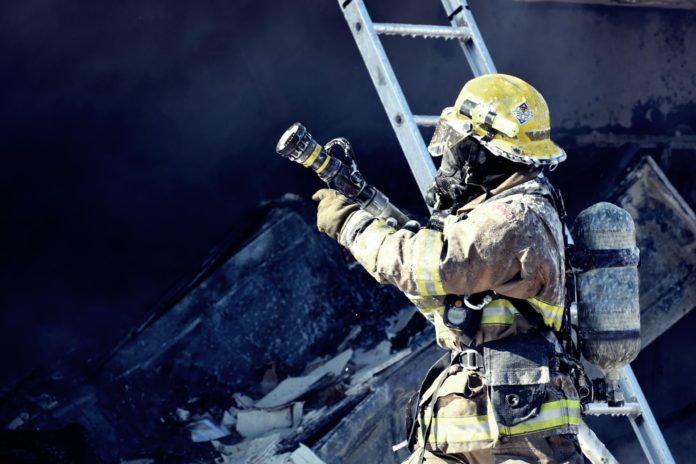Firefighters typically wear more than 45 pounds of protective equipment, but according to new research, some fire-proof fabrics might not be as safe as you’d expect. The high sulphur content in some of these fabrics can cause them to degrade prematurely, putting firefighters at an even greater risk on the job.
The research was led by Saiful Hoque, a PhD student in Textile and Apparel Science at the University of Alberta’s Faculty of Agricultural, Life & Environmental Sciences, and published in the Journal of Applied Polymer Science.
In 2020, research from the University of Alberta discovered that repeated launderings can cause some fire-proof fabrics to degrade over time. Yet regularly washing firefighting gear is crucial, because carcinogenic particles from fires can penetrate this gear and put firefighters at a high risk of cancer.
Hoque’s goal was to investigate why hot water causes these fabrics to degrade faster than expected, and whether anything can be done to stop it.
To do this, Hoque and collaborators submersed eight different fire-proof fabrics in water of varying temperatures for up to 50 days. The fabrics they studied are all commonly used in the outer shells of firefighters’ protective equipment, as well as in protective gear worn by electricians and oil and gas workers.
The team then tested the tensile strength of each fabric — in other words, the stress the fabric can withstand without breaking. They found that many of the fabrics had become significantly weaker after being submersed in the water, and to make matters worse, this loss of tensile strength was not always visible by eye.
“As the garment weakens over time, there’s no way to know whether the wearer is still protected or not,” Hoque said in a press release.
The team went on to analyze the chemical contents of the different fabrics in hopes of uncovering the cause behind the worst degradations. While all the fabrics did start to degrade over the course of the research, some fabrics did so much faster than others.
They found that the fabrics which had degraded the fastest all contained high levels of sulphur, which is acidic, and which is used in the yarn-spinning process for many fibres. The researchers believe that the high water temperatures caused this acidic material to leech out of the fibres used in the fabric, accelerating the degradation of the rest of the fire-proof material.
Now, the team hopes that their work can be used to inform manufacturers of fire-proof gear. This could mean investigating alternatives to sulphur in fire-proof materials, using fibres with lower sulphur contents, or reducing the amount of sulphur used in the yarn-spinning process. By doing so, manufacturers can help keep firefighters safer on the job.
“We’re hoping to work with industry to come up with solutions,” said Patricia Dolez, an associate professor in the University of Alberta’s Faculty of Agricultural, Life & Environmental Sciences, and coauthor of the study.
“We now have the data we needed on the degradation of fire-protective fabrics (due to long-term exposure to water) to select the right material to use.”







































